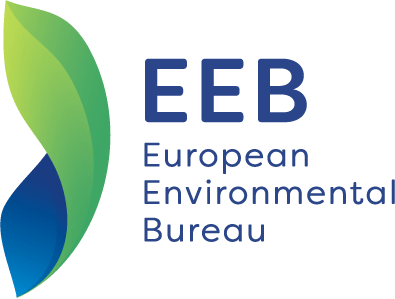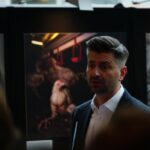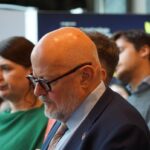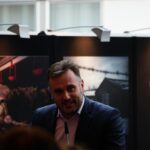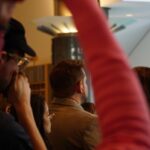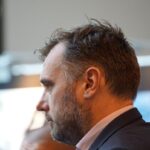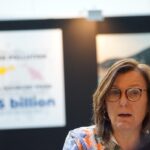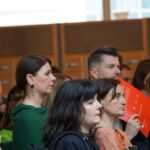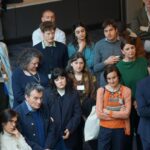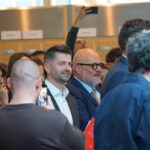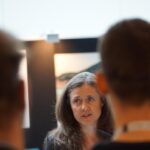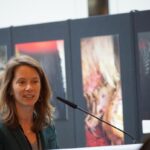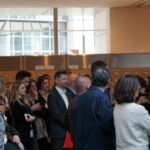Powerful Photos Reveal the Hidden Costs of Factory Farming
BRUSSELS, 24 March 2025 – It’s too easy to fool ourselves when we think about where our food comes from. Say the word “farm” and the average person may think of open fields, animals roaming freely, and harmony between nature and agriculture.
But the reality is starkly different for millions of animals across Europe.
To uncover the true face of intensive farming, the European Institute for Animal Law and Policy and the European Environmental Bureau today launched a compelling photography exhibition at the European Parliament, “Factory Farming: Unveiling the Hidden Costs” (24-27 March 2025).
Hosted by MEPs Tilly Metz (Greens/EFA), Manuela Ripa (EPP), Krzysztof Śmiszek (S&D), Michal Wiezik (Renew), and Anja Hazekamp (GUE/NGL), the exhibition showcases powerful images capturing the stark realities of industrial-scale animal agriculture.
From animals’ extreme confinement to environmental devastation and the neglect of rural communities, these works from 12 photojournalists across 13 EU countries including the award-winning Jo-Anne McArthur – who is guest speaker at the exhibition’s launch event – reveal the true cost of factory farming on animals, human health, and ecosystems.
Alongside the images, eye-opening infographics offer data-driven insights into the scale of these problems and the urgent need for a transition towards a more ethical agricultural model that works in harmony with nature – not against it.
Olga Kikou, Director of Advocacy at The European Institute of Animal Law & Policy and one of the organizers of the ‘End the Cage Age’ European Citizens’ Initiative:
“In factory farms, animals are turned into production machines. Being forced to live in high concentrations in unnatural social groups leads to behavioural problems and the spread of disease. Animals have no contact with the outdoors, are fed human-edible crops and are often sick. The physiological and psychological issues stemming from these systems lead the industry to adopt ‘quick fixes’, such as cages or mutilations. We urge policy makers to act against the immense cruelty pervasive in EU farming.”
Isabel Paliotta, Policy Officer for Sustainable Food Systems at EEB:
“As this exhibition illustrates, we’re sold a myth about animal farming in Europe. Today’s industrialised model of animal rearing not only imposes needless suffering on billions of animals – it is also wreaking havoc on our ecosystems and rolling the dice with public health. We need this Commission to deliver a concrete strategy to support farmers towards a just system that works for them, while ensuring high animal welfare standards, and protecting neighbouring communities and nature.”
In her speech, Jo-Anne McArthur said:
“These images and stories are where they need to be: before the change makers. Photojournalists and policy makers have always had strong partnerships. We are seeing that here today, for animals.”
“People in the EU demand change. These photographs are proof of the inherent cruelty in factory farming, and I hope that, coupled with our partners at the EU, the urgent change that animals need will begin in earnest.”
We were delighted that a number of MEPs also spoke at the launch today, including those below, as well as Krzysztof Smiszek and Sebastian Everding.
Manuela Ripa:
“Farmers care for their animals and want better conditions for them. That is why we should empower farmers to improve animal welfare and ensure that such practices are properly funded. We need animal welfare also for our own health and the health of this planet”.
Michal Wiezik:
“This exhibition is really hard to watch, but it’s really important to have an opportunity to dive into the pictures because these are the standards we have in Europe for factory farming. There’s a good reason they keep this reality hidden from us. This suffering is unacceptable. Millions of animals are suffering and as soon as you witness the cruelty, it’s the heart, the soul and the common sense that suffer”.
Tilly Metz:
“This is about the water we drink. The soils we need to plant our fruits and vegetables. The air we breathe. It’s about the people who live close to these factories and work beside them. It’s about our own health and the health of everyone around us. This is about compassion, about ethics, about the livability of this planet for future generations.”
Niels Fuglsang:
“Factory farming considers animals as things so that we can buy as much meat and cheese as possible as cheaply as possible. We’ve been promised the End the Cage Age by the European Commission and it needs to come.
Marc Angel:
“Factory farming is a failure of our society”.
This is not just an exhibition; it’s a call to action for a more ethical future.
- European Parliament, Spinelli Floor 3, Distribution Area, 24th-27th March 2025
- Launch event on Tuesday 25th March at 13:00
~ Ends ~
For further information, please contact:
Ben Snelson, Communications Officer for Agriculture and Food, the European Environment Bureau (benedict.snelson@eeb.org)
Vienna Leigh, Communications Specialist, The European Institute for Animal Law & Policy (vienna@animallaweurope.org)
Notes to the Editor:
- The European Institute for Animal Law & Policy is the first think-and-do-tank specializing in animal law and policy based in Brussels. We work to advance the protection of animals in Europe. Our vision is that of a world where animals are no longer exploited, but treated as living, sentient beings worthy of care and respect.
- The European Environmental Bureau is Europe’s largest network of environmental organisations with over 185 member organisations in 41 countries, representing some 30 million individual members and supporters.
- The ‘End the Cage Age’ European Citizens’ Initiative gathered 1.4 million verified signatures from across the EU and is the only Initiative that prompted the European Commission to commit to implementing all its requests. However, the Commission failed to propose a ban on cages by the 2023 deadline, leading Olga Kikou and the six other organizers to take legal action against the Commission.
- Photo and video journalism from We Animals Media is available here.
Featured image credit: Pierre Parcoeur, We Animals
